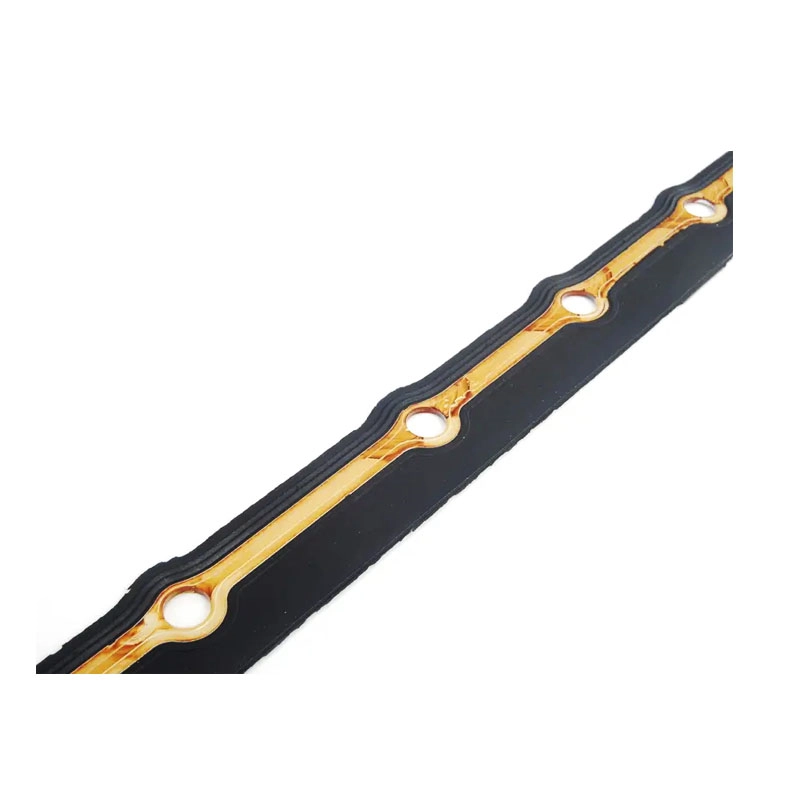Understanding the Importance of Transmission Sump Gaskets in Vehicle Maintenance
Understanding Transmission Sump Gaskets Importance and Maintenance
The transmission system is a critical component of any vehicle, responsible for transferring power from the engine to the wheels. Among the various parts of this system, the transmission sump gasket plays a vital role. This article will delve into the importance of the transmission sump gasket, its functions, common issues, and maintenance tips.
What is a Transmission Sump Gasket?
A transmission sump gasket is a sealing component located between the transmission pan (or sump) and the transmission housing. This gasket is typically made from materials such as rubber, silicone, or cork, designed to withstand high temperatures and transmission fluid pressures. Its primary function is to create a tight seal that prevents transmission fluid from leaking out.
Importance of the Transmission Sump Gasket
The transmission sump gasket is crucial for several reasons
1. Prevention of Fluid Leaks One of the primary functions of the sump gasket is to prevent automatic transmission fluid (ATF) leaks. Leaks can lead to a low fluid level, which can severely damage the transmission.
2. Maintaining Transmission Health The gasket helps maintain the pressure and temperature of the transmission fluid, which is essential for optimal performance. If the gasket fails and fluid leaks occur, it can result in overheating and premature wear of transmission components.
3. Cost-Effectiveness Replacing a transmission sump gasket is significantly less expensive than fixing transmission problems caused by low fluid levels or overheating. Early detection of leaks can save vehicle owners considerable repair costs.
Common Issues with Transmission Sump Gaskets
Despite their importance, transmission sump gaskets can fail due to various reasons
transmission sump gasket

2. Improper Installation If a gasket is not installed correctly, it can lead to uneven sealing surfaces, resulting in leaks.
3. Fluid Contamination If the transmission fluid becomes contaminated with debris or metal shavings, it can wear down the gasket faster than normal, leading to premature failure.
4. Temperature Fluctuations Extreme temperature changes can cause the gasket material to expand and contract, leading to cracks or breaks.
Maintenance Tips
To ensure the longevity and effectiveness of your transmission sump gasket, consider the following maintenance tips
1. Regular Fluid Checks Routinely check the transmission fluid level and quality. Dark, burnt-smelling fluid or low levels could indicate a leak, prompting immediate inspection of the gasket.
2. Monitor for Leaks Keep an eye out for any signs of fluid leaks under your vehicle. A puddle of red or brown fluid can indicate a problem with the sump gasket.
3. Professional Inspections Have your transmission system inspected regularly by a qualified mechanic. They can reach hard-to-see areas and check for potential issues, including wear on the gasket.
4. Correct Installation During Replacement If a gasket replacement is necessary, ensure that it is installed correctly, following the manufacturer's specifications for torque settings and surface preparation.
Conclusion
The transmission sump gasket may seem like a small and inconspicuous part, but it plays a vital role in ensuring the smooth operation of your vehicle's transmission. By understanding its function and maintaining it properly, you can prolong the life of your transmission and avoid costly repairs. Regular checks and professional maintenance will go a long way in protecting this essential component of your vehicle. Stay proactive, and your transmission will thank you for it!
-
Simplifying Oil Changes: A Comprehensive Guide to Oil Drain Plugs and Their Variants
News Aug.04,2025
-
Mastering Oil Drain Maintenance: Solutions for Stripped, Worn, and Upgraded Oil Plugs
News Aug.04,2025
-
Fixing Oil Pan Plug Issues: Leaks, Stripped Nuts, and the Right Replacement Solutions
News Aug.04,2025
-
Everything You Need to Know About Oil Drain Plugs: Sizes, Fixes, and Upgrades
News Aug.04,2025
-
Choosing the Right Oil Drain Plug: A Guide to Sizes, Materials, and Drain Innovations
News Aug.04,2025
-
A Complete Guide to Automotive Drain Plugs: Types, Problems, and Innovative Solutions
News Aug.04,2025
-
The Ultimate Guide to Car Repair Kits: Tools and Essentials Every Driver Should Own
News Aug.01,2025
Products categories















